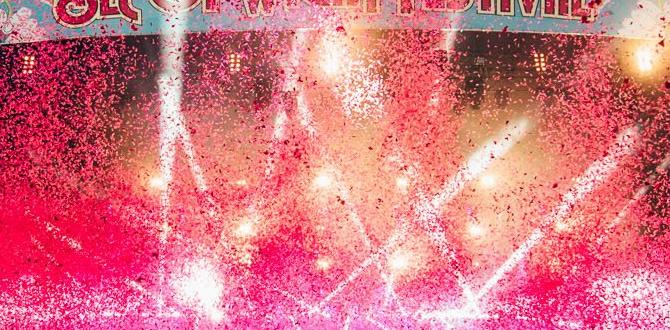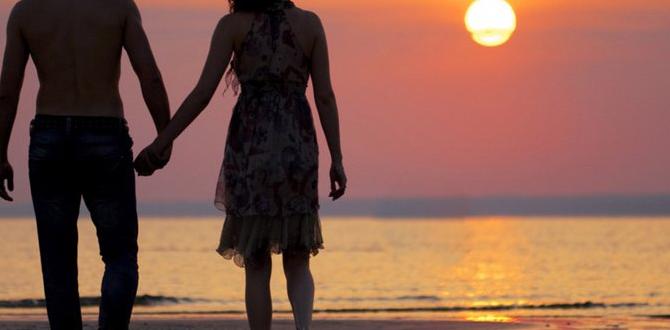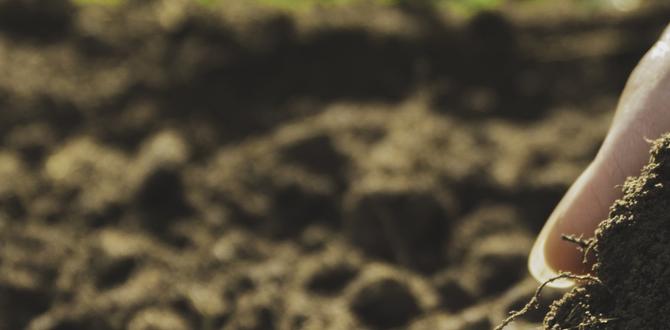Your Banff 4-day itinerary can unlock the stunning Canadian Rockies. This plan balances iconic sights with hidden gems, ensuring a memorable adventure for all. Get ready for breathtaking lakes, majestic mountains, and unforgettable experiences with this easy-to-follow guide.
Planning a trip to Banff National Park can feel a little overwhelming, right? With so many jaw-dropping spots, it’s tough to know where to start, especially if you only have a few days. You want to see the big highlights but also soak in the real atmosphere. Don’t worry, crafting the perfect Banff 4-day itinerary is simpler than you think! This guide breaks it all down into easy steps, promising a trip filled with wonder and minimal stress. Let’s dive into making your Rockies adventure unforgettable!
Your Ultimate Banff 4-Day Itinerary: A Beginner’s Guide
Banff National Park is a gem in Canada’s Rocky Mountains, offering unparalleled natural beauty. From turquoise lakes to towering peaks, it’s a dream destination for nature lovers and adventurers alike. A 4-day trip is a fantastic amount of time to experience its most iconic sights and get a true feel for its magic. This itinerary is designed for beginners, focusing on accessible activities and iconic locations, ensuring you have a comfortable and memorable journey. We’ll cover everything from packing essentials to daily adventures, making your travel smoother, especially if you’re managing travel with children or need to consider personal comfort solutions like discreet adult diaper options for longer excursions.
Preparing for Your Banff Adventure
Before we set off on our daily explorations, let’s ensure you’re prepped. Packing smart is key to enjoying your time in the mountains. Banff’s weather can change quickly, so layers are your best friend.
What to Pack for Banff
Clothing: Moisture-wicking base layers, fleece or down mid-layers, waterproof and windproof outer jacket and pants. Comfortable hiking pants or shorts, t-shirts.
Footwear: Waterproof hiking boots or sturdy walking shoes are essential. Comfortable shoes for around town.
Accessories: Sunscreen, sunglasses, a wide-brimmed hat, insect repellent, a reusable water bottle, a backpack for day trips.
Navigation/Safety: A map of the park, a compass or GPS device if hiking extensively. A basic first-aid kit.
Optional but Recommended: Binoculars for wildlife viewing, a camera, bear spray (know how to use it – Parks Canada offers bear safety information).
Getting Around Banff
Car Rental: Offers the most flexibility to explore at your own pace.
Roam Transit: Banff’s public bus system is a great option for getting to popular spots around town and to nearby attractions like Lake Louise.
Shuttles: Various tour operators offer shuttle services to key attractions.
Day 1: Arrival and Banff Townsite Charm
Welcome to Banff! Today is about settling in and exploring the heart of the park.
Morning: Arrival and Check-in
Arrive at Calgary International Airport (YYC) and pick up your rental car or arrange your transfer to Banff. The drive to Banff is about 1.5 hours and already offers stunning mountain views.
Check into your accommodation in Banff townsite. There are options ranging from cozy B&Bs to full-service hotels.
Afternoon: Banff Avenue and Banff Gondola
Stroll down Banff Avenue, the main street. It’s lined with unique shops, art galleries, and restaurants. Enjoy the vibrant atmosphere and the majestic backdrop of Mount Rundle.
Take the Banff Gondola up Sulphur Mountain for panoramic views of six mountain ranges. At the summit, walkways and boardwalks allow you to explore, and there’s a visitor centre and restaurant. This is a fantastic way to get an overview of the landscape. For those who prefer a gentle, comfortable ascent suitable for various needs, including those requiring adult diaper solutions for extended periods on transport or in cooler weather, the gondola is an excellent, accessible choice.
Evening: Relaxation and Local Flavors
Enjoy dinner at one of Banff’s many restaurants. From casual pubs to fine dining, there’s something for every palate. Try a local Alberta beef dish!
Consider a relaxing soak at the Banff Upper Hot Springs for a bit of post-travel rejuvenation.
Day 2: The Iconic Lakes – Louise & Moraine
Prepare to be mesmerized by two of the most famous lakes in the Canadian Rockies.
Morning: Lake Louise Exploration
Wake up early! Drive to Lake Louise (approx. 45 minutes from Banff townsite). Parking here fills up very quickly, especially during peak season. Consider taking the Roam Transit bus or a dedicated shuttle service.
Marvel at the unbelievably turquoise waters of Lake Louise, set against the backdrop of the Victoria Glacier and the Fairmont Chateau Lake Louise. Walk along the lakeshore or rent a canoe for a classic experience on the water.
Traveler Tip: For families traveling with young children or individuals needing added comfort and confidence during longer outings, ensuring you have readily available personal care items like discreet incontinence pants can make all the difference in enjoying the day fully.
Afternoon: Moraine Lake Majesty
From Lake Louise, head to Moraine Lake (access can be restricted, so check Parks Canada for shuttle or private transport options). Moraine Lake is famous for the “Twenty Dollar View” from the Rockpile, offering a postcard-perfect scene of the Valley of the Ten Peaks.
Wander along the lakeshore. Hiking trails of varying difficulty are available, but even a short stroll offers incredible vistas.
Evening: Scenic Drive and Stargazing
Take the scenic Bow Valley Parkway back towards Banff, keeping an eye out for wildlife. The parkway is less developed than the main highway and offers a chance to see elk, deer, or even bears.
If the skies are clear, Banff is a designated Dark Sky Preserve. Find a spot away from town lights (like Bow Lake or along the Bow Valley Parkway) for incredible stargazing.
Day 3: Nature Immersion and Wildlife Spotting
Today is about getting up close with Banff’s natural beauty and its inhabitants.
Morning: Johnston Canyon Hike
Drive to Johnston Canyon (approx. 30 minutes from Banff townsite). This is one of Banff’s most popular attractions for good reason.
The main trail is a paved catwalk bolted to the canyon walls, leading to the Lower and Upper Falls. It’s an easy to moderate hike, suitable for most fitness levels. The spray from the falls is refreshing, and the scenery is spectacular.
Accessibility Note: The paved path makes it a good option for families and those who might need more stability. Carrying a lighter day pack with essentials, and knowing you have personal care solutions like incontinence pads readily available, can allow for greater freedom to enjoy this natural wonder without worry.
Afternoon: Wildlife Watching and Lake Minnewanka Cruise
Drive along the Lake Minnewanka Loop, a scenic road that’s excellent for spotting wildlife. Elks and bighorn sheep are frequently seen here. Keep your distance and use binoculars or a zoom lens.
Consider a scenic cruise on Lake Minnewanka. It’s Banff’s largest lake and offers stunning views of the surrounding mountains and deep blue water. The cruise is a relaxing way to experience the lake.
Evening: Banff Upper Hot Springs or Banff Upper Hot Springs
Regardless of whether you visited on Day 1, the Banff Upper Hot Springs are a perfect way to unwind after a day of exploring. Relax in the mineral-rich waters while taking in the mountain scenery. It’s a truly therapeutic experience.
Day 4: Scenic Drives and Departure
Your last day is for enjoying more breathtaking views and a relaxed departure.
Morning: Icefields Parkway – A Glimpse
Embark on a portion of the renowned Icefields Parkway, heading north from Lake Louise towards Jasper. Even a short drive offers incredible vistas.
Stop at Bow Lake and the historic Num-Ti-Jah Lodge (check if accessible/open). The reflections in Bow Lake are often stunning.
Continue a bit further to Peyto Lake viewpoint. This short walk leads to one of the most photographed spots in Banff, with its unique wolf-head-shaped lake.
Travel Pro-Tip: For the best experience on long drives, ensuring comfort is paramount. For adults who may need extra safeguards, having TENA discreet pads or similar convenient options means longer scenic drives are more enjoyable and worry-free.
Afternoon: Return to Banff or Canmore for Lunch
Drive back towards Banff townsite at a leisurely pace, perhaps stopping at a viewpoint you missed on the way out.
Alternatively, if you have time, consider a stop in the charming town of Canmore on your way back towards Calgary. It offers a slightly different, yet equally stunning, mountain town vibe and excellent dining options.
Evening: Departure
Enjoy a final meal in Banff or Canmore before heading back to Calgary International Airport (YYC) for your departure, filled with memories of the majestic Rockies.
Banff Itinerary Overview Table
To help visualize your trip, here’s a quick summary of the proposed Banff 4-day itinerary.
| Day | Morning | Afternoon | Evening |
|---|---|---|---|
| 1 | Arrival, Check-in, Banff Townsite | Banff Avenue, Banff Gondola | Dinner, Banff Upper Hot Springs |
| 2 | Lake Louise (Iconic Lake, Canoe Rental) | Moraine Lake (Rockpile View, Lakeshore Walk) | Bow Valley Parkway, Wildlife Spotting, Stargazing |
| 3 | Johnston Canyon Hike (Lower & Upper Falls) | Lake Minnewanka Loop (Wildlife), Lake Minnewanka Cruise | Relaxation in Banff |
| 4 | Icefields Parkway (Bow Lake, Peyto Lake Viewpoint) | Return via scenic drive, lunch in Banff or Canmore | Departure Prep, Travel to Calgary Airport |
Banff 4-Day Itinerary: Frequently Asked Questions
Here are some common questions beginner travelers have about planning a trip to Banff.
Q1: What is the best time of year to visit Banff?
Banff is beautiful year-round, but for this itinerary focusing on lakes and accessibility, summer (June to September) is ideal. The lakes are unfrozen and at their vibrant turquoise best. Autumn (late September to early October) offers stunning fall colors and fewer crowds. Winter is for snow sports and a snowy wonderland experience, but lake access and hiking vary greatly.
Q2: How much does it cost to visit Banff National Park?
You will need a Parks Canada Discovery Pass to enter Banff National Park. Prices vary depending on the type of pass (daily, monthly, or annual). You can find current pricing on the Parks Canada website. Beyond the pass, costs include accommodation, food, transportation, and activities like the gondola or boat cruises.
Q3: Do I need to book accommodations and activities in advance?
Yes, especially if you are traveling during the peak summer season (June-September) or holidays. Banff is a very popular destination, and accommodations, popular tours, and even parking at key spots like Lake Louise can book up months in advance. Booking your hotel and any must-do activities early will save you stress and ensure you get your preferred options.
Q4: What if I’m traveling with young children or need specific comfort solutions?
Banff is very family-friendly! Many attractions, like Johnston Canyon and the gondola, are accessible. When planning for kids, ensure you pack extra snacks, layers suitable for changing weather, and any personal necessities. For adults who might need discreet support, carrying Prevail adult briefs or similar products ensures comfort and confidence during full days of sightseeing, allowing everyone to enjoy the experience.
Q5: Is it safe to drive in Banff? What about wildlife?
Roads in Banff are generally well-maintained. Drive cautiously, especially on mountain roads, and always obey speed limits. Wildlife is abundant. Never feed animals, and maintain a safe distance. Pull over only in designated areas for viewing. Be aware of your surroundings, especially if hiking.
Q6: Can I see Banff National Park without a car?
Yes, you absolutely can! The Roam Transit system in Banff is excellent, connecting the townsite to major attractions like Lake Louise, Moraine Lake (via shuttle), and Johnston Canyon. Many tour operators also offer shuttle services and guided tours, making it possible to experience Banff’s highlights without driving yourself.
Q7: I’m concerned about prolonged transport or cooler weather impacting my personal comfort. What are some solutions?
This is a common concern for travelers who value comfort and discretion. Packing well-chosen personal care items, like comfortable and absorbent Kendall incontinence products or similar, can make a significant difference. They are designed for discretion and prolonged wear, allowing you to focus on enjoying the scenery and your Banff adventure without any added worry about personal comfort or unexpected situations.
Conclusion
Banff National Park is a destination that truly stays with you, long after you’ve left its majestic peaks and impossibly blue lakes behind. This 4-day itinerary is just a starting point, a friendly map to guide you through the essentials while leaving room for spontaneity. Whether you’re marveling at Lake Louise, hiking through Johnston Canyon, or simply breathing in the crisp mountain air, Banff offers an experience that rejuvenates the soul. Remember, the most important aspect of any trip is to feel comfortable and prepared, allowing you to fully immerse yourself in the beauty surrounding you. Pack smart, plan ahead where necessary, and embrace the adventure. Your essential guide to Banff awaits, promising a journey of wonder and unforgettable memories. Safe travels!



